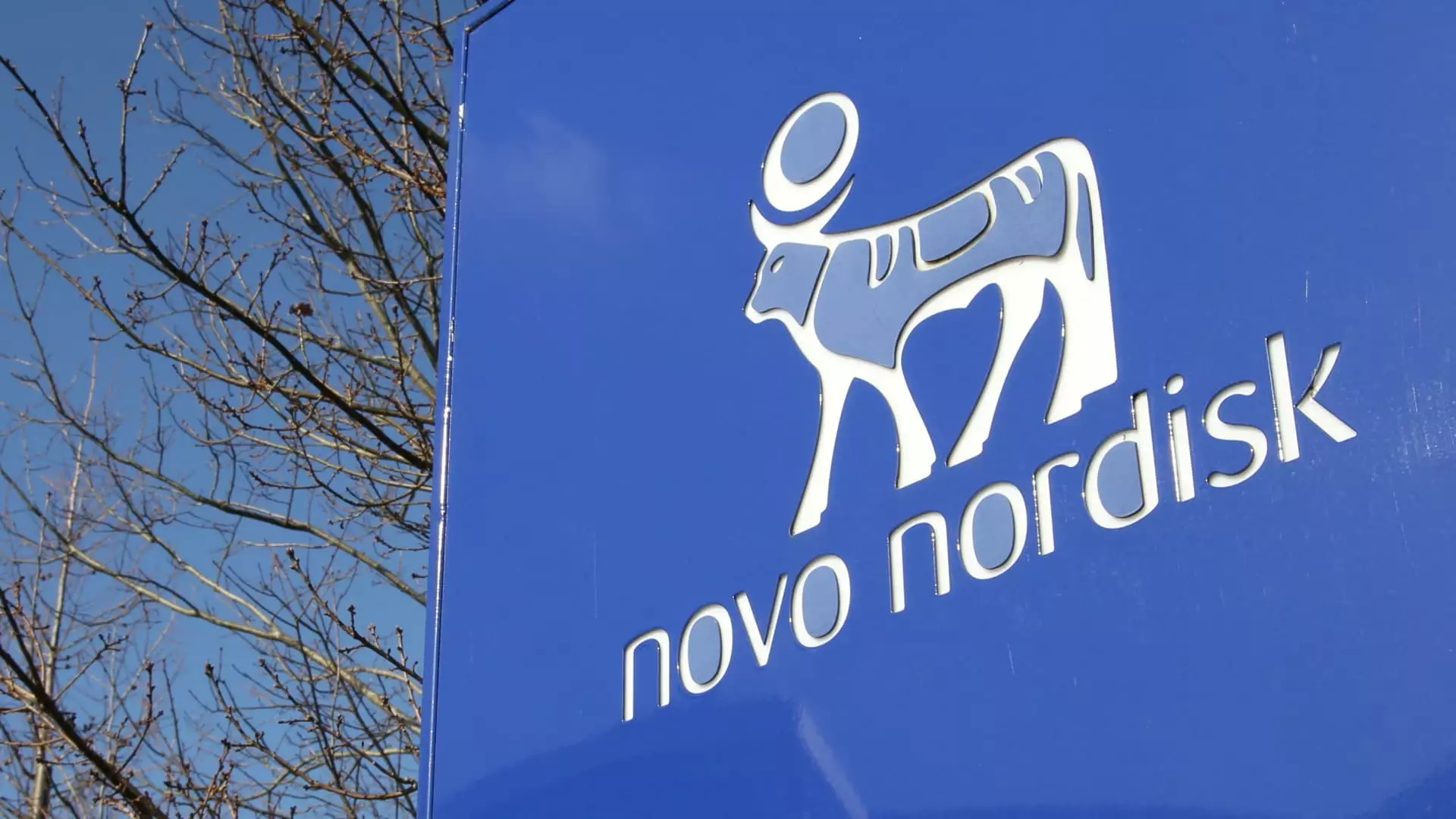With its eyes set on revolutionizing the obesity treatment landscape, Novo Nordisk recently found itself grappling with underwhelming clinical trial results for its highly anticipated drug, CagriSema. The enthusiasm surrounding CagriSema—a combination of the amylin analog cagrilintide and the established GLP-1 medication semaglutide—emphasized the pharmaceutical company’s goal of outshining its competitors, most notably Eli Lilly’s Zepbound. However, with only a 15.7% reduction in body weight over 68 weeks for patients with type 2 diabetes, expectations have been dashed. Not only did the results fall short of company forecasts, but they sent Novo’s stock tumbling over 50% from its peak—a stark reminder of the tenuous nature of pharmaceutical advancement.
A Reality Check for Investors
Novo Nordisk’s CEO, Lars Fruergaard Jørgensen, attempted to mitigate the fallout by expressing confidence in CagriSema’s potential, even under the shadow of disappointing trial data. This is more than mere optimism; it’s a defensive maneuver aimed at appeasing worried investors and restoring faith in a company that has long prided itself on innovation and efficacy. Nevertheless, comments made during the Annual General Meeting suggested a disconnect between corporate ambitions and clinical realities. Shareholders are understandably anxious, pushing for greater transparency and more rigorous trial designs that may salvage what appears to be a sinking ship.
The frustration stemming from these trials illuminates the reality of drug development: high stakes with even higher risks. Investors who once viewed Novo as an untouchable pharmaceutical giant now face the sobering truth that innovation isn’t just about creating novel compounds; it’s about delivering results that matter. CagriSema’s latest trial outcomes prove that even groundbreaking drugs can suffer from the unpredictability of human biology—or worse, the ineptitude of clinical trial design. As the market evolves, invalidating previous expectations could shatter the credibility of Novo Nordisk’s research paradigm.
Overpromising and Underperforming
One of the most glaring issues surrounding CagriSema’s trials was the communication—or lack thereof—surrounding the flexible trial design. Jørgensen acknowledged growing frustrations regarding the firm’s inability to clarify expectations, particularly the tolerability aspects as evidenced by the drop-off of two-thirds of patients from the highest dosage by the end of 68 weeks. This revelation exposes two critical issues: a poor understanding of the patient experience and a failure to meet the higher demands of regulatory scrutiny in clinical trials. With every misstep, shareholders grow increasingly skeptical about Novo Nordisk’s ability to articulate its path forward, particularly when the stakes involve not just profit, but public health.
Investors are not the only concerned stakeholders. As the obesity treatment conversation expands, it becomes crucial to prioritize a range of approaches tailored to distinct patient needs. The landscape is increasingly complex, factoring in variables such as cardiovascular risk, sleep disorders, and metabolic dysfunction—factors that CagriSema, significantly, still looks poised to address—but only if it can assure a consistent safety profile and measurable effectiveness.
Promise of Future Trials
In response to these setbacks, Novo Nordisk has launched a new Phase 3 trial, dubbed REDEFINE 11, which seeks to further realize the potential trapped within CagriSema. Yet, one must wonder: can the company rebound from this disappointment? Will investors remain faithful, knowing that the road to clinical success is often riddled with obstacles? Cautious optimism seems warranted, but it will require more than just better trial results—it necessitates a serious re-evaluation of strategic planning going forward.
Despite these challenges, the appetite for effective obesity treatments remains insatiable. As public health officials, health organizations, and patients converge to demand viable solutions, Novo Nordisk is straddling a precarious balance between innovation and accountability. With voices of caution now echoing throughout the industry, it remains unclear whether optimism can outweigh disappointment in the competitive space of obesity pharmacotherapy. Only time will tell if CagriSema can rise from the ashes of unmet expectations or if it will become a footnote in the narrative of obesity interventions.

